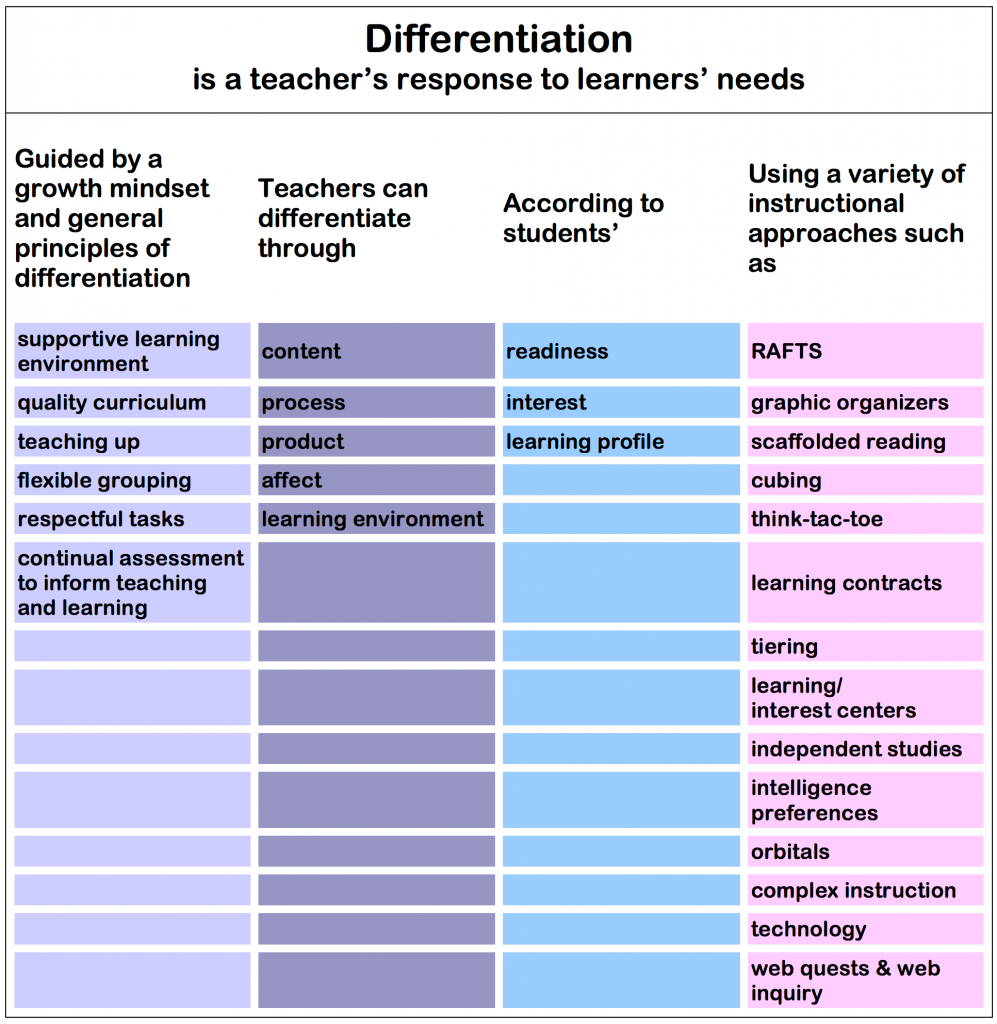Myths and Misconceptions about Differentiated Instruction and Universal Design for Learning
Differentiation plays into ongoing debates about equity and “academic tracking” in public schools. One major criticism of the approach is related to the relative complexities and difficulties entailed in teaching diverse types of students in a single classroom or educational setting.
Since effective differentiation requires more sophisticated and highly specialized instructional methods, teachers typically need adequate training, mentoring, and professional development to ensure they are using differentiated instructional techniques appropriately and effectively.
Some teachers also argue that the practical realities of using differentiation—especially in larger classes comprising students with a wide range of skill levels, academic preparation, and learning needs—can be prohibitively difficult or even infeasible.
Yet other educators argue that this criticism stems, at least in part, from a fundamental misunderstanding of the strategy. In her book How to Differentiate Instruction in Mixed-Ability Classrooms, the educator and writer Carol Ann Tomlinson, who is considered an authority on differentiation, points out a potential source of confusion:
“Differentiated instruction is not the ‘Individualized Instruction’ of the 1970s.”
In other words, differentiation is the practice of varying instructional techniques in a classroom to effectively teach as many students as possible, but it does not entail the creation of distinct courses of study for every student (i.e., individualized instruction).
The conflation of “differentiated instruction” and “individualized instruction” has likely contributed to ongoing confusion and debates about differentiation, particularly given that the terms are widely and frequently used interchangeably.
(Myths and Misconceptions, n.d)
Differentiated Instruction and Implications for UDL Implementation
To differentiate instruction is to recognize students’ varying background knowledge, readiness, language, preferences in learning and interests; and to react responsively. As Tomlinson notes in her recent book Differentiated Classroom: Responding to the Needs of All Learners (2014), teachers in a differentiated classroom begin with their current curriculum and engaging instruction. Then they ask, what will it take to alter or modify the curriculum and instruction so that so that each learner comes away with knowledge, understanding, and skills necessary to take on the next important phase of learning. Differentiated instruction is a process of teaching and learning for students of differing abilities in the same class. Teachers, based on characteristics of their learners’ readiness, interest, learning profile, may adapt or manipulate various elements of the curriculum (content, process, product, affect/environment). These are illustrated in Table \(\PageIndex{2}\): below which presents the general principles of differentiation by showing the key elements of the concept and relationships among those elements.

Table \(\PageIndex{2}\): Differentiation is a teacher's response to learner's needs. Adapted with permission from Carol Tomlinson: Differentiation Central Institutes on Academic Diversity in the Curry School of Education at the University of Virginia (September 2014)


